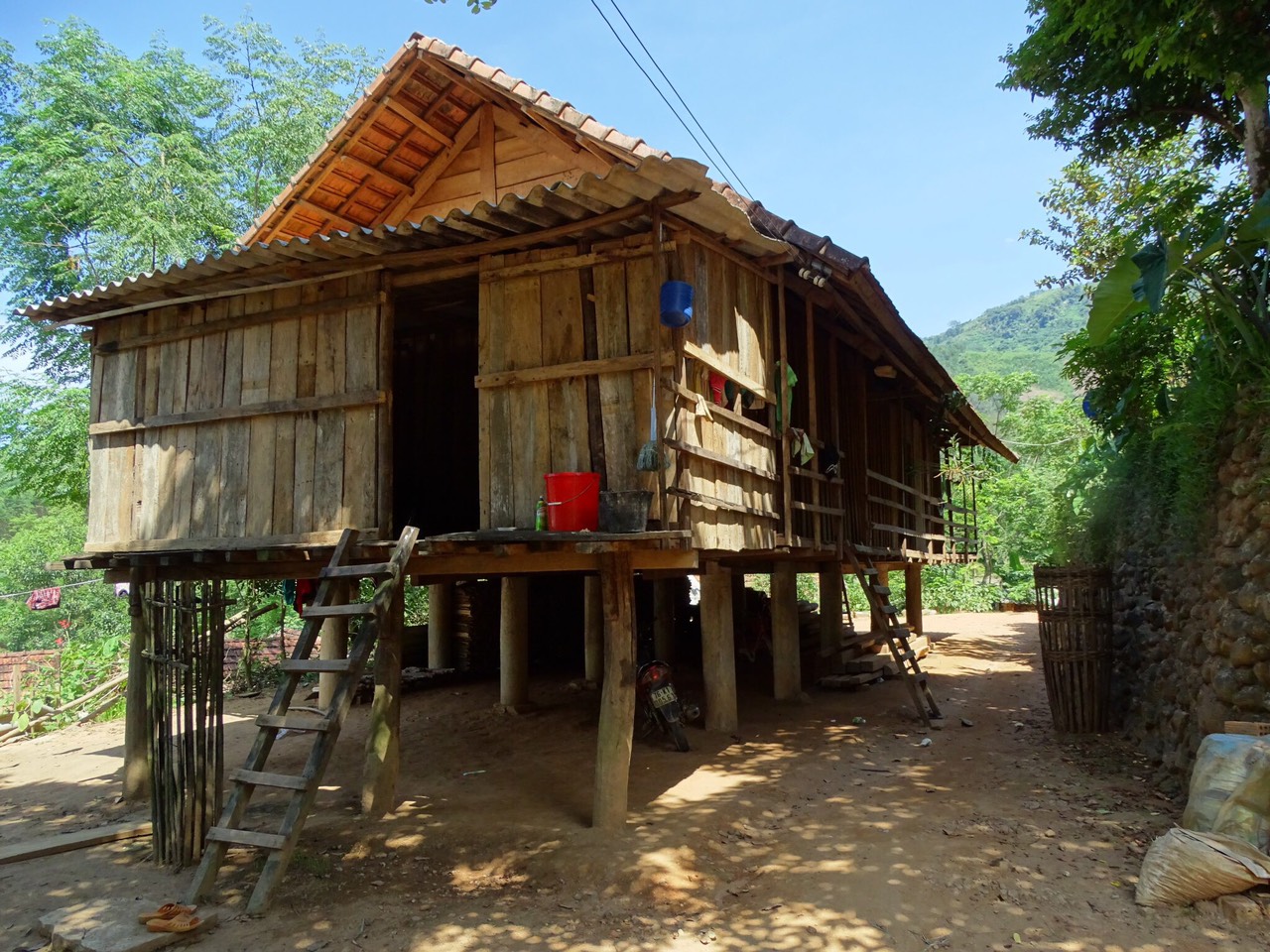
Introduction – origin
The H’rê speak a language from the Mon-Khmer linguistic family, quite similar to that of the Sedang and Bahnar.
They are a sedentary people who live mainly in Quang Ngai and Binh Dinh.
In the past, the H’rê people all had the same family name, namely Dinh. Now, they have developed surnames quite similar to those of the Kinh – Nguyen, Ha and Pham.
Food crops
Most H’rê people work rice in wet fields, only a few live on slash-and-burn fields. The cultivation method – burning – plowing, is done with simple farming tools. Each family raises buffaloes, pigs, dogs and chickens. Gathering, hunting and fishing are an important source of food.
Houses – villages
The villages, large from fifty to one hundred houses, are located near water sources and fields. Each village takes the name of the water source or the mountain that shelters it.
The longhouses are on stilts and built on the side of a hill next to a field. The floor is one meter above the ground. The roof is covered with thatch of cylindrical imperate (a herbaceous plant), the two ends of the ridge are decorated with buffalo horns. Each house has three compartments, the one in the middle housing the hearth and the altar of the ancestors. On the side are the men’s and women’s corners, each accessible by its own staircase, while the guests have access by a central staircase.
Each village will elect its chief, a man of age, virtuous, with knowledge and goods and a divine sorcerer who will officiate during the ceremonies.
The family
Marriages are very often arranged, widows and widowers can marry their sister-in-law or brother-in-law, taking care to ensure consanguinity. Adultery and concubinage are forbidden.

The dead are buried in the village cemetery. The grave resembles a house, the H’rê let the dead go to live with: food, drinks, household items, costumes, tools, all arranged in front of and in the grave. The latter is neither maintained nor visited. Built against a large stake, over the years only this one will remain in place and visible. One can thus see at the approach of the villages of curious plots of poles…
Costumes
H’rê men wear a cover-up, sometimes a loincloth or short shirt and a turban on their head. Women wear a two-layer skirt and a five-panel blouse, plus a scarf covering the head.
Les croyances
Each object, each being, is animated by a spirit….The H’rê are one with nature and the environment, placing themselves on the same level as each element.

Against plagues and diseases, the H’rê rely on supernatural forces to which they make sacrifices.
For Tet, the ceremony of sacrificing the buffalo, which they consider to be their main work tool, also aims to attract health, luck, serenity and a clement climate.
Arts
Brocatelle weaving is quite developed by this ethnic group, which also practices blacksmithing and basketry.
They love to compose verses and sing, including two unique melodies, the Kaleu song and the Kachoi songs (male-female reciprocal songs). Their musical instruments are varied, from zithers, flutes, drums and especially gongs which they consider the most precious instrument.

















































